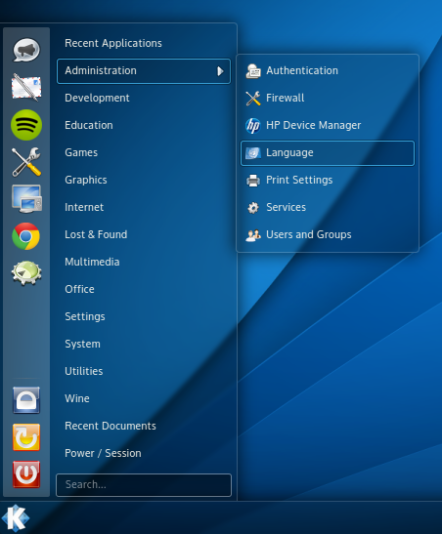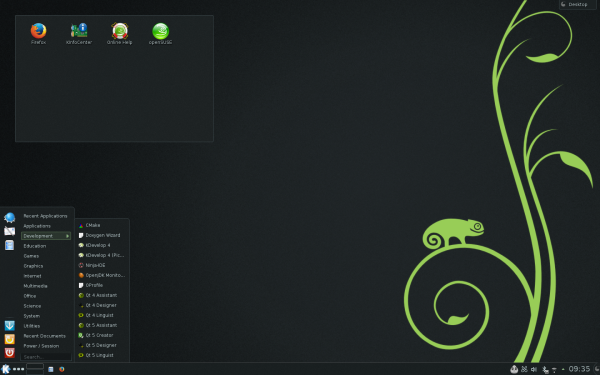In the next hours KDE:Current will publish KDE 4.13 SC. As that this release comes with a big change (Nepomuk -> Baloo), we would like some simple steps in order to perform the right upgrade.
Before the upgrade
In order to migrate data automatically from the Nepomuk store to the new format (used by Baloo), you will need Nepomuk up and running, and just for the time needed for the migration. Ensure that Nepomuk is running before the update (in System Settings > Desktop Search). This is only necessary in case Nepomuk is in use on the system.
The upgrade itself
- If you are already using KDE:Current then the upgrade should be a simple “zypper up” or upgrade packages through YaST Software Management.
- If you are not yet using KDE:Current, then please follow the instructions on https://en.opensuse.org/KDE_repositories#Current_KDE_SC_release on how to add the necessary repositories. After adding them, a zypper dup is required to ensure that all the KDE packages are coming from KDE:Current.
Please do not remove nepomuk, as that otherwise the migration to baloo will fail !! Also after the upgrade please make sure that the following package is installed “baloo-file”. After this check, log off and back on. The migrator will then run and move all the data that can be migrated to the new system. It will also turn off Nepomuk at the end of the migration.
At this moment it would be safe to remove the nepomuk related packages like nepomuk-core, libnepomukwidgets, soprano*, strigi, virtuoso and shared-desktop-ontologies. There are only a few packages left that are still
requiring the nepomuk-framework (like bangarang, kweshtunotes, etc).
Using Baloo
Unlike the ‘include folders to be indexed’, Baloo prefers to index everything and exclude unwanted folders explicitly. With the standard setup, Baloo will index all files and directories below the home-directory. All other filesystems are indicated as omitted. This can be changed by deleting the respective entries. Unfortunately it is not possible to switch baloo off through systemsettings. If baloo is not wanted on the system, then the package “baloo-file” needs to be removed to prevent files being indexed. The package “baloo-pim” (only present when kdepim is installed) can be removed if no search capabilities are required for kmail.
The only search client currently available for baloo, is the package called milou. Milou can be placed in the panel for easy access and the usage is quite simple. The search term is indicated and search results are shown for files, emails, etc. In the Milou settings, the categories from which results are shown can be selected. Milou can NOT be placed in the systray, as that this would cause the plasma desktop to crash upon login.
Tags on files are no longer stored inside the database, but stored in the extended file attributes (xattr), which are stored in separate files on the filesystem.
Known issues with KDE 4.13
- The initial indexing can be heavy on I/O especially if there are large text files: either one waits till the indexing is complete (this step is done only once), or the folder containing such files is excluded using System Settings.
- Some data will be lost during the migration: in particular, emails will have to be re-indexed, and file<->activity associations, if used, will not be preserved.
- Milou causes the Plasma-desktop to crash if it is placed in the systray !!


